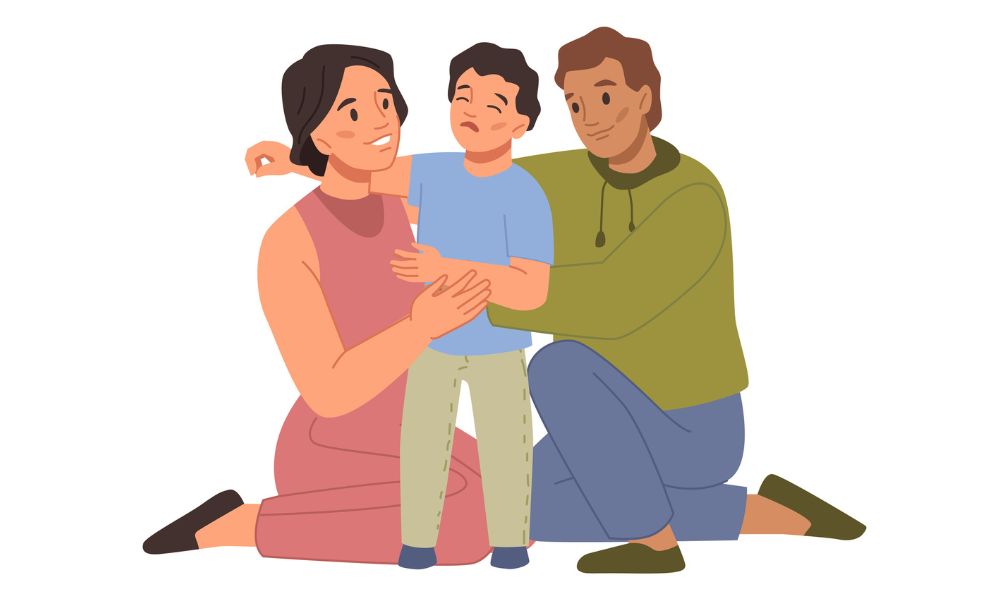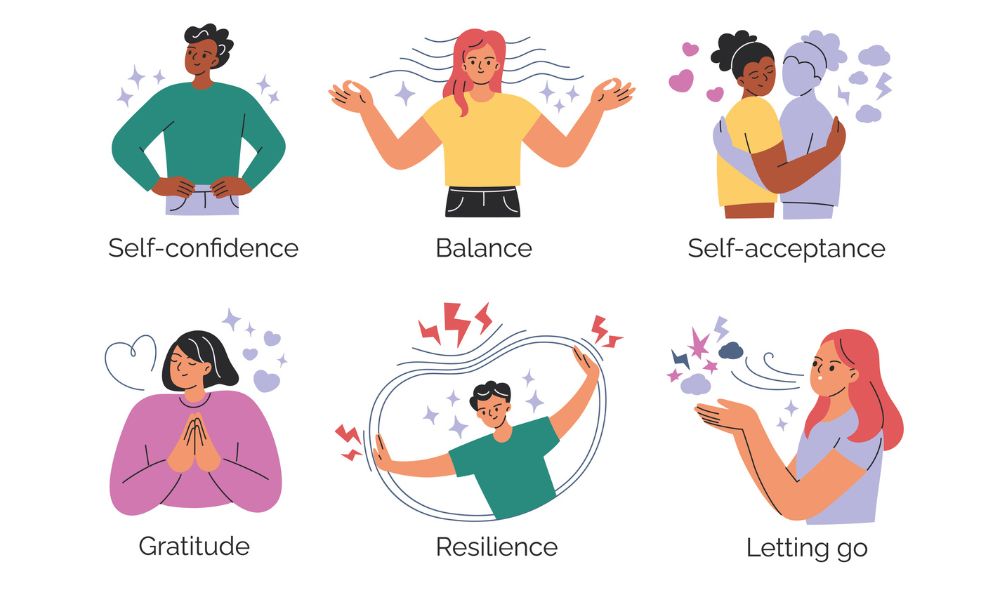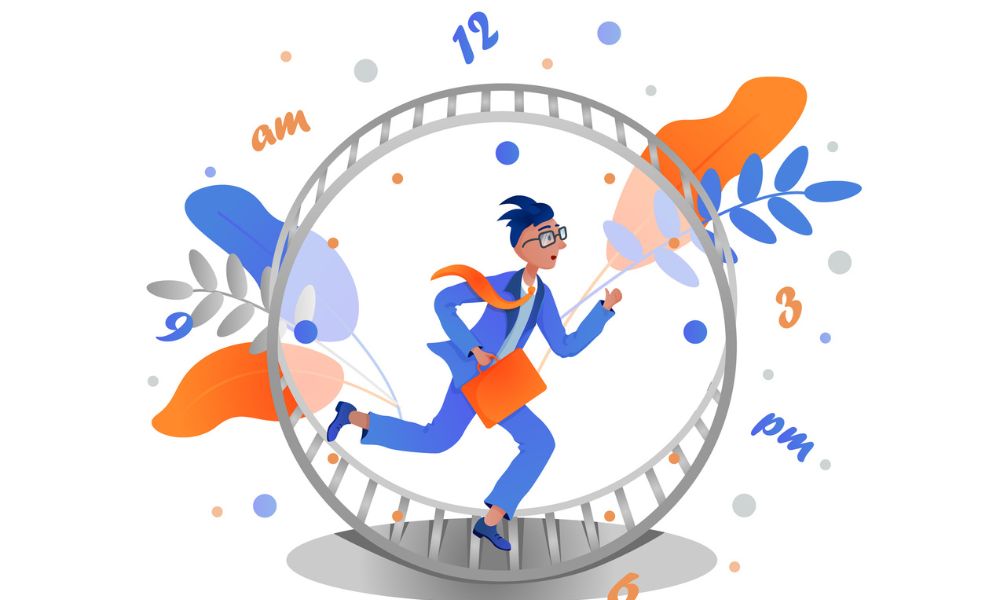Cognitive Behavioural Therapy (CBT) is a powerful tool for those struggling with anger management. By helping individuals recognise and change negative thought patterns, CBT can lead to lasting changes in how we handle anger in our daily lives. Many people experience anger, but not everyone knows how to control it effectively. Through structured therapy sessions, we can learn techniques to manage our emotions in healthier ways.

Understanding the principles of CBT gives us a solid foundation to work from. We explore various intervention strategies designed to help us identify triggers and develop coping mechanisms. This approach not only addresses the immediate feelings of anger but also equips us with skills to deal with future challenges, making it a valuable addition to our mental health toolkit.
Want to improve your relationships and reduce stress? CBT offers methods that extend beyond therapy, allowing us to apply what we've learned in real-life situations. This ensures we have consistent support as we work through our anger issues together.
Key Takeaways
- CBT helps change negative thought patterns linked to anger.
- Therapy sessions equip us with practical coping strategies.
- Skills learned can be applied beyond the therapy room to improve daily life.
Understanding Anger: The Basics

Anger is a natural emotion that we all experience, but its intensity and expression can vary significantly. Understanding what anger is and what can trigger it helps us manage our responses more effectively.
The Nature of Anger
Anger is a complex emotion that often arises from feelings of stress, frustration, or perceived injustice. It can be seen as an emotional response to threats or challenges. This reaction can manifest physically, such as increased heart rate or tension in our muscles.
Anger can serve a purpose; it can motivate us to change a situation or protect ourselves. However, when it escalates into aggression, it can harm relationships and lead to negative outcomes. It is important to recognise that we can control our responses rather than allowing anger to control us.
Common Triggers and Responses
Many factors can trigger our anger. Some common triggers include feeling misunderstood, experiencing stress, or facing unfair treatment. When we encounter these situations, our emotional response may lead to various behaviours.
Responses to anger can range from calm discussion to aggressive outbursts. For example, we might express our anger by shouting or withdrawing from a situation. Understanding these triggers and responses allows us to develop healthier ways to cope. Recognising our patterns can prevent anger from overwhelming us and help us respond more constructively.
The Principles of CBT

Cognitive Behavioural Therapy (CBT) is built on a structured framework that connects our thoughts, feelings, and behaviours. Understanding these principles helps us effectively utilise CBT for anger management and other challenges.
Cognitive Model Overview
The cognitive model is at the heart of CBT. It suggests that our thoughts influence our emotions and behaviours. When we have negative thoughts, we often feel bad and act in ways that may not be helpful.
For example, if we think, "I can't control my anger," we may react aggressively. By changing this thought to, "I can manage my anger," we can improve our emotional responses and behaviours. This model helps us identify and modify unhelpful thinking patterns that lead to anger.
Cognitive Therapy vs Behaviour Therapy
Cognitive therapy and behaviour therapy are two essential components of CBT. Cognitive therapy focuses on changing thought patterns, while behaviour therapy aims to modify actions.
In anger management, we work on both aspects. For instance, we might challenge cognitive distortions, like black-and-white thinking, which can exaggerate our anger. Simultaneously, we practice new behaviours, such as relaxation techniques or assertive communication, to handle anger better.
These two approaches complement each other. By addressing thoughts and behaviours together, we create a more comprehensive and effective strategy for managing anger.
The Role of Cognitive Distortions
Cognitive distortions are irrational or exaggerated thought patterns that can fuel anger and other negative emotions. Recognising these distortions is crucial in CBT.
Some common distortions include:
- All-or-nothing thinking: Viewing situations in black and white.
- Catastrophising: Expecting the worst possible outcome.
- Mind reading: Assuming we know what others are thinking.
By identifying these distortions, we can start to challenge and reframe them. This process helps reduce anger and improve our emotional well-being. By replacing distorted thoughts with more balanced ones, we gain better control over our emotions and reactions.
CBT for Managing Anger

Cognitive Behavioural Therapy (CBT) is effective for helping us manage anger by addressing thoughts and behaviours driving this emotion. We focus on assessing our anger, setting clear goals, and employing specific techniques to reduce its intensity and frequency.
Assessment and Formulation
In our journey with CBT, the first step is assessment. We identify triggers and situations that lead to anger. This process involves understanding the thoughts we have when we feel angry.
We write these thoughts down and analyse them closely. This helps in recognising patterns. By doing this, we formulate a clear map of how our mind reacts to anger. This formulation is key to tailoring CBT techniques to our unique experiences.
Setting Therapeutic Goals
Once we understand our triggers and patterns, we set specific therapeutic goals. These goals should be SMART: Specific, Measurable, Achievable, Relevant, and Time-bound.
For example, we might aim to reduce our angry outbursts by a certain percentage within a defined timeframe. We also decide on behaviours we want to change, such as yelling or clenching fists. Setting these goals gives us direction and motivation as we progress through CBT.
CBT Techniques and Exercises
We can utilise various CBT techniques to manage anger effectively. Here are some essential exercises:
-
Cognitive Restructuring: We challenge negative thoughts that fuel our anger. By reframing these thoughts, we can react more calmly.
-
Relaxation Techniques: Practising deep breathing or progressive muscle relaxation helps us calm down before we react.
-
Behavioural Experiments: We test new ways of responding in situations that usually provoke anger. This helps us understand what works best for us.
These techniques allow us to gain control over our emotions, leading to healthier responses to anger. With consistent practice, we can manage our anger more effectively and improve our relationships.
Intervention Strategies

In our exploration of Cognitive Behavioural Therapy (CBT) for anger management, we will discuss three key intervention strategies. These approaches help individuals understand their anger, change negative thought patterns, and develop coping strategies to prevent future episodes.
Behavioural Activation
Behavioural activation is a technique that encourages us to engage in positive activities. When we feel angry, we may withdraw from our usual routines, making things worse. By scheduling enjoyable and meaningful activities, we can boost our mood and create a sense of accomplishment.
Key steps in behavioural activation include:
- Identifying activities that bring us joy.
- Setting specific times to engage in these activities.
- Reflecting on how these activities affect our mood and anger levels.
For instance, going for a walk, reading a book, or participating in hobbies can divert our attention from anger and improve our emotional state.
Cognitive Restructuring
Cognitive restructuring helps us identify and challenge automatic thoughts that contribute to anger. Often, negative thinking patterns can escalate emotional responses. We begin by recognising these thoughts and questioning their validity.
For example, if we think, “Everyone is out to get me,” we might feel justified in our anger. Instead, we can reframe this thought to a more balanced perspective, such as, “Not everyone is against me; some people care.”
Key techniques in cognitive restructuring include:
- Identifying cognitive distortions: Such as black-and-white thinking.
- Challenging negative thoughts: By asking ourselves for evidence.
- Reframing: Developing more balanced thoughts to reduce anger intensity.
These steps collectively empower us to manage our emotions more effectively.
Relapse Prevention
Relapse prevention is crucial in sustaining our progress after experiencing anger management improvements. We need to anticipate situations that may trigger our anger and develop strategies to cope.
Effective relapse prevention strategies include:
- Creating an action plan: Outlining steps to take when we feel angry.
- Recognising triggers: Identifying people, places, or situations that escalate our anger.
- Practising coping strategies: Using relaxation techniques, deep breathing, or mindfulness exercises when we feel anger rising.
By having a plan in place, we build resilience and reduce the likelihood of future anger episodes.
Special Considerations in CBT
In our work with Cognitive Behavioural Therapy (CBT), we encounter specific factors that can influence treatment effectiveness. These include addressing co-occurring disorders, adapting CBT to meet the needs of diverse populations, and recognising challenges that may arise during therapy. Each factor is crucial for tailoring our approach and ensuring successful outcomes.
Treating Co-Occurring Disorders
Many individuals seeking anger management also struggle with co-occurring disorders such as anxiety, depression, or substance abuse. This dual diagnosis complicates treatment, as symptoms of one condition can exacerbate the other.
In CBT, we must create an integrated treatment plan. We need to recognise how anxiety or PTSD might trigger anger outbursts. Furthermore, it’s vital to build strategies that address both anger and the co-existing disorder.
For instance, if a client has OCD alongside anger issues, we could teach them to manage intrusive thoughts contributing to their anger. By targeting both areas, we ensure a more comprehensive approach.
Adapting CBT for Diverse Populations
When working with diverse populations, we must adapt CBT techniques to be culturally sensitive. Different backgrounds may affect how clients express anger or perceive mental health.
For example, some individuals may view anger as a sign of strength, while others see it as a weakness. Our therapy must consider these cultural perspectives.
We should also be aware of language barriers or different expressions of distress. Using relatable examples from clients’ lives can promote engagement and understanding. We strive to ensure our approach is inclusive, allowing everyone to access the benefits of CBT.
Challenges in Therapy
Therapeutic challenges can arise in various forms. For instance, clients may struggle with trust issues due to past trauma or have difficulty expressing emotions.
We must maintain a supportive environment that encourages openness. If clients have personality disorders, we may encounter resistance or emotional volatility during sessions.
Setting clear goals and maintaining structure can help mitigate these challenges. Additionally, ongoing assessment is essential to adjust our methods based on individual progress. By staying flexible, we can respond effectively to any issues that arise.
CBT Beyond the Therapy Room
Cognitive Behavioural Therapy (CBT) extends beyond the therapy room into our daily lives. It equips us with skills that we can apply in various situations. Engaging in homework assignments, building self-esteem, and incorporating mindfulness practices significantly enhance our ability to manage anger effectively.
Homework Assignments
Homework assignments are a vital part of CBT. They help reinforce what we learn during therapy. These tasks can include reflecting on our anger triggers, journaling about our feelings, or practising new coping strategies in real-life situations.
For example, we might keep an anger diary to note when we feel angry and what led to those feelings. This practice allows us to see patterns and develop problem-solving techniques. Completing these assignments helps us integrate CBT principles into our daily routines.
Building Self-Esteem and Resilience
Building self-esteem and resilience is crucial in managing anger. When we feel good about ourselves, we are less likely to respond aggressively. We can start by recognising our strengths and celebrating small achievements.
Activities like setting realistic goals or practising positive self-talk can help. It is also important to challenge negative thoughts that diminish our self-worth. By enhancing our self-esteem, we better equip ourselves to handle frustrations and setbacks without resorting to anger.
Incorporating Mindfulness
Incorporating mindfulness into our routine can greatly improve our anger management. Mindfulness teaches us to be present and aware of our thoughts and feelings without judgment. This practice helps us pause before reacting.
We can engage in mindfulness through exercises like deep breathing or meditation. These techniques help ground us and reduce stress levels. As we become more aware of our triggers, we can respond to situations in a calmer, more controlled manner. Mindfulness is a powerful tool that enhances our ability to manage anger and respond thoughtfully.
The Therapeutic Relationship and Support
In cognitive behavioural therapy (CBT) for anger management, the therapeutic relationship plays a vital role in fostering positive outcomes. We rely on strong support systems and effective supervision to enhance the therapy process and aid our clients in navigating their challenges.
The Role of the Therapist
The therapist acts as a guide in the therapeutic process. Their role is not only to provide techniques for anger management but also to establish trust with clients. A strong therapeutic relationship allows clients to feel safe and understood.
Through active listening and empathy, we can help clients express their feelings. This connection encourages openness, promoting deeper exploration of underlying issues. Our goal is to empower clients to recognise the triggers of their anger and develop coping strategies.
Additionally, we must adapt our methods to fit each client's unique needs. This flexibility is essential in building a rapport that facilitates growth and healing. A well-established relationship enhances the effectiveness of CBT.
Building a Supportive Network
Support from friends, family, and peers is crucial for sustained progress in managing anger. We encourage clients to build a supportive network that complements their therapy. This network can be a source of encouragement and accountability outside of our sessions.
Involvement in support groups or community resources can further strengthen this network. Group settings offer shared experiences that normalise feelings of anger and provide additional strategies for coping. We promote participation in these groups as they foster connection and understanding, which can be enriching for the client's journey.
Having a strong support system helps clients feel less isolated while managing their anger. The blending of individual therapy with a supportive community enhances overall effectiveness in the treatment process.
The Importance of Supervision
Supervision is essential for us as practitioners in the field of CBT. It provides us with the opportunity to reflect on our practices and ensure we are offering effective support to clients. Regular supervision sessions allow for discussion of challenging cases and encourage professional growth.
In supervision, we examine our therapeutic approaches and gain insights from experienced colleagues. This ongoing learning helps us stay updated on best practices and new research in the field. We can also receive feedback on how to strengthen our therapeutic relationships with clients.
By prioritising supervision, we ensure that we are providing the best care possible. This commitment to our professional development ultimately benefits the clients we serve in their anger management journey.
Evaluating CBT Outcomes
In evaluating the outcomes of Cognitive Behavioural Therapy (CBT) for anger management, we consider various factors that influence recovery. Key elements include the measurement of treatment effectiveness, what happens after treatment, and how individuals maintain their progress over time.
Measuring Treatment Effectiveness
To assess how effective CBT is for anger management, we often use standardised tools. Surveys and questionnaires help us track changes in anger levels and related symptoms. Tools like the Anger Management Questionnaire (AMQ) measure various aspects of anger expression and control.
Studies indicate that CBT can significantly reduce symptoms of anger and improve emotional regulation. For example, a meta-analysis found that CBT had a moderate effect on decreasing anger issues. We can also look at physical symptoms, as anger often manifests through stress-related health problems.
By systematically measuring these changes, we gain valuable insights into how CBT works and its overall effectiveness.
Post-Treatment Considerations
After completing CBT, it’s important to reflect on the ongoing journey of recovery. Many individuals may experience a return of anger symptoms if they do not continue applying the strategies learned. Regular check-ins with a therapist or participation in support groups can be beneficial.
We also encourage practising coping strategies in real-world situations. Journaling feelings or using breathing exercises can help manage anger as it arises. Individuals may find that reinforcement of these skills over time helps solidify their progress.
Relapse Prevention Techniques:
- Ongoing Therapy: Regular sessions can provide support.
- Support Groups: Sharing experiences can enhance coping.
- Monitoring Triggers: Recognising situations that provoke anger is crucial.
Long-Term Recovery and Maintenance
Long-term recovery from anger issues requires commitment to the principles of CBT. We need to stay vigilant about our triggers and adhere to coping strategies that have proven effective.
Integrating healthy habits, like regular exercise and mindfulness practices, can also support emotional well-being. These practices help reduce physical symptoms related to anger and stress.
As we maintain our progress, it’s vital to adapt our strategies to fit changing circumstances. We encourage seeking new resources or therapies if old methods become less effective over time. Emphasising resilience and adaptability will help us sustain improvements in anger management.
Frequently Asked Questions
In this section, we answer common questions about how Cognitive Behavioural Therapy (CBT) can support individuals struggling with anger management. We cover various aspects of CBT, including its exercises, resources, and specific approaches for different age groups.
How can Cognitive Behavioural Therapy aid in managing anger?
CBT helps us understand the thoughts and feelings that trigger our anger. By identifying these triggers, we can learn to change our responses. This technique helps replace harmful behaviours with healthier coping strategies.
What types of exercises are included in CBT worksheets for anger management?
CBT worksheets often include exercises that help us recognise negative thought patterns. We may also complete activities that encourage us to reframe these thoughts. Additionally, tracking our feelings and behaviours can help us see our progress over time.
Are there any self-help guides available for managing anger through CBT?
Yes, there are many self-help guides available. These resources provide step-by-step strategies based on CBT principles, helping us manage our anger more effectively. We can often find these guides on mental health websites, such as the NHS.
What does a CBT anger management programme typically involve?
A typical CBT anger management programme includes individual or group therapy sessions. These sessions focus on teaching us skills to manage and express anger. We may also engage in role-playing and other activities to practice these skills in real-life situations.
How does Cognitive Behavioural Therapy address anger in children?
CBT can be adapted for children by using age-appropriate language and activities. This approach helps children identify their feelings and learn coping mechanisms. Therapists might include games and creative activities to make the process engaging and effective.
Can one access free anger management courses based on CBT principles?
Many organisations offer free anger management courses that are based on CBT. These courses can often be found online through community health services or mental health charities. They provide valuable tools and techniques to help us better manage our anger.





















